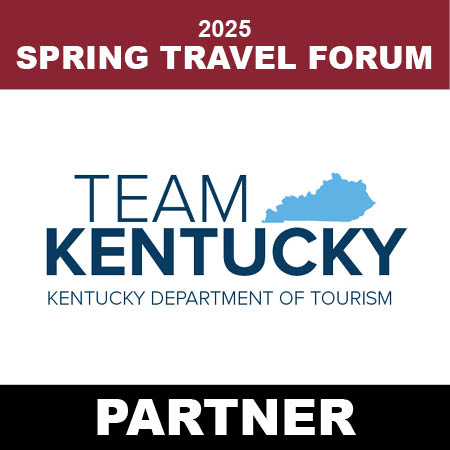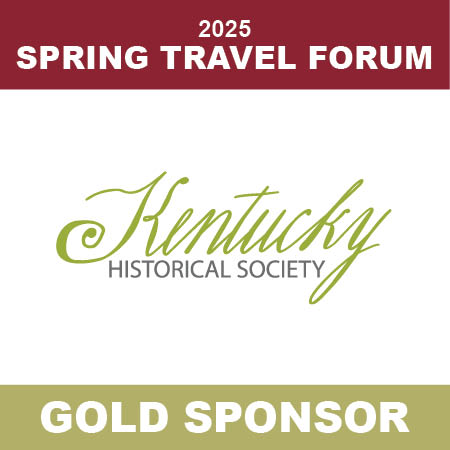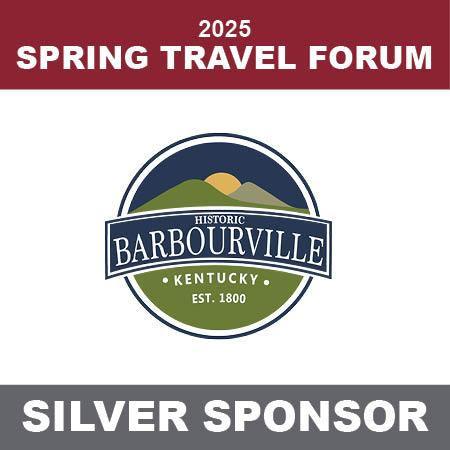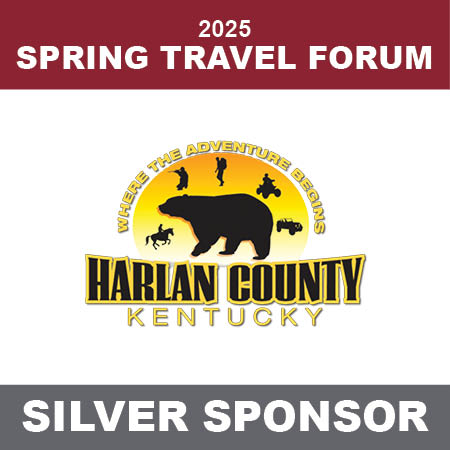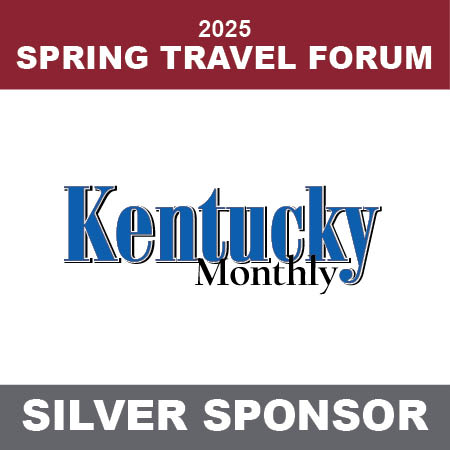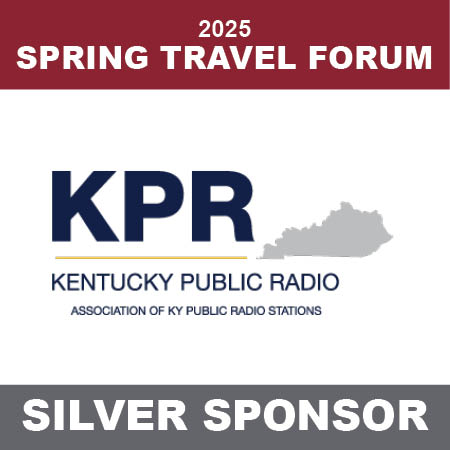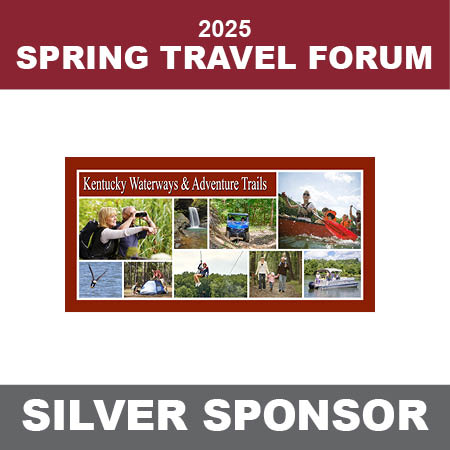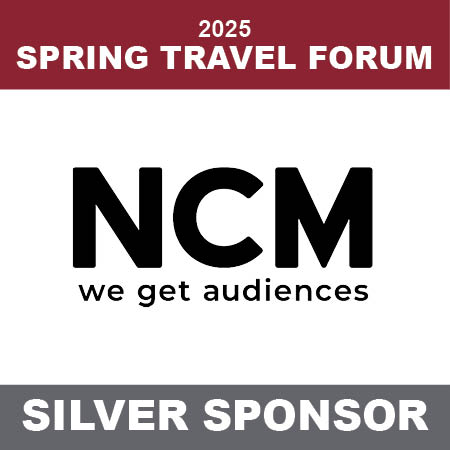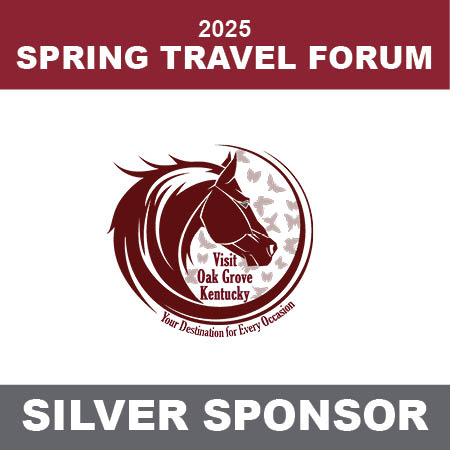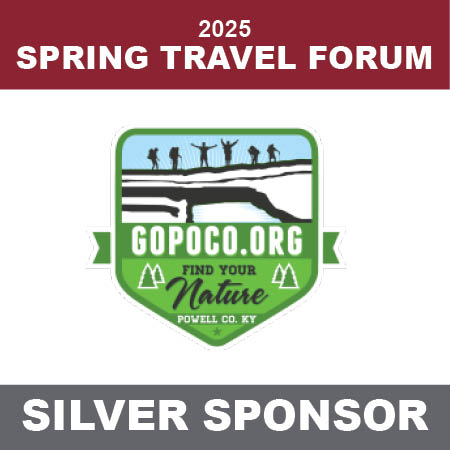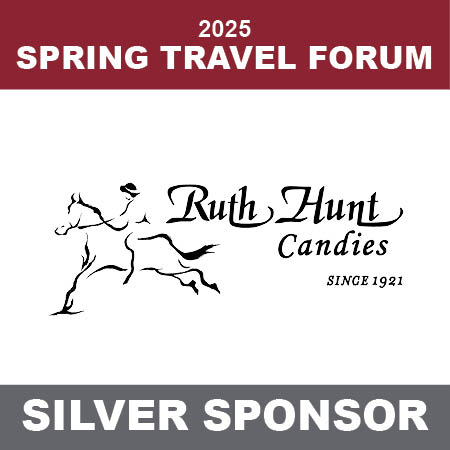|
KTIA Journal of Travel & Tourism
April 2021
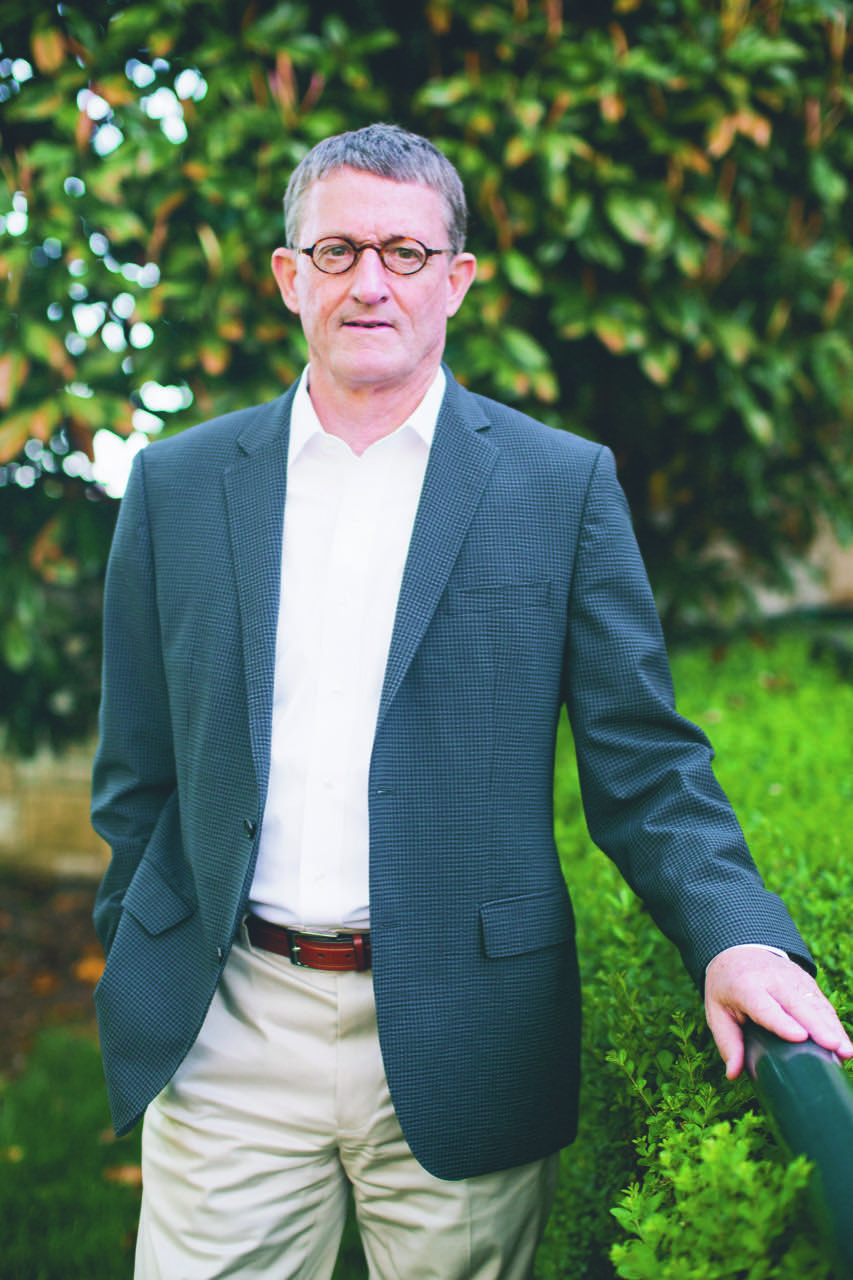 Mac Lacy, President & Publisher of The Group Travel Leader Inc., and Pioneer Publishing Inc.
Mac Lacy is president and publisher of The Group Travel Leader Inc., a Lexington-based publishing and marketing firm founded in 1990 that owns and publishes three national magazines for the travel industry: The Group Travel Leader, Select Traveler, and Going On Faith. Mr. Lacy is co-founder and partner in the Select Traveler Conference and the Going On Faith Conference.
He is also president and publisher of Pioneer Publishing Inc., a company founded in 1992 that owns and publishes Small Market Meetings, a magazine for the meetings industry, and is a founding partner of the Small Market Meetings Conference.
Mr. Lacy is a former vice president of marketing for the National Tour Association and a former deputy commissioner for the Kentucky Department of Travel. He is a past chairman of the Kentucky Travel Industry Association and received its Mangeot-Oaken Distinguished Service Award in 2004.
A native of Hopkinsville, Mr. Lacy holds a B.S. in Journalism from the University of Evansville in Indiana (1978). Mac is married, with two sons, and resides in Bardstown.
KTIA: Your publications serve a wide range of audiences that include group travel buyers generally, as well as banks, alumni organizations, museums, chamber of commerce travel planners, faith-based travel buyers and groups, and small market meetings. Have any of these audiences fared better or worse than the others over the course of the pandemic?
Our Select Traveler readership includes many of our most engaged readers and planners, who are also among those most personally ready to return to travel. However, they represent professional organizations like banks, alumni groups and chambers of commerce, so in many cases their upper management had been cautious about when to begin traveling with customers again. Based on the CDC’s recent statement that those who have been vaccinated may travel with little risk, our research now shows that 57 percent of their organizations are ready to resume traveling as a result. And 27 percent more will do so when more global destinations are open.
Our Small Market Meetings’ readers use a lot of publicly-managed space like convention centers, so they, too, have been impacted by local decisions outside their control. Hopefully most of these headwinds are in our industry’s rearview mirror because we’ve lost way too many companies, employees, restaurants and hotels to this virus already.
KTIA: The flip side of the first question is: Will any of the audiences you serve rebound from the pandemic more rapidly or slowly than the others?
We expect to see our Going On Faith readers be among the “early adopters” for a return to travel. In general, these church groups are among the least influenced by what the public does at large — they tend to be more independent in their thinking. For instance, my guess is that The Ark Encounter in Northern Kentucky will see its group business return more quickly than most as a result of that market’s overall independence.
Our Select Traveler readers do a lot of international travel and it’s obvious that overseas travel to favorites in Europe and other places are still subject to a lot of travel restrictions. Much of that business will stay in the U.S this year, so domestic destinations should prioritize this market for a while.
KTIA: Do you agree that pent-up travel demand is real and not wishful industry thinking? And, if so, do you foresee difficulties meeting that demand either by tour and motorcoach operators, or their suppliers, due to any of the COVID economic crisis business disruptions they have experienced?
Pent-up demand is definitely real. Even national media that have reported daily on the need for people to stay home and avoid traveling over the past year are reporting on the pent-up demand that is out there. Most of us who have gotten our vaccines have felt a weight fall off our shoulders. I think the vast majority of people in this country feel like they’ve done what they needed to do the past year and have been responsible about their health and the health of others. Now, they want to regain their lives — and their travel. Our research finds that 22 percent of our groups are traveling now, 45 percent will be by summer, and 76 percent will be by this fall.
Most of us will never take travel for granted again, and maybe that’s a good thing. For KTIA members who lobby at the state and local levels, there should be a much more receptive audience out there for the message they carry about how vital travel is to our economies at every level.
Yes, there will be some supply and demand issues for travel of all kinds coming out of this. Groups have been getting smaller for years due to traveler preferences for more localized experiences. Now, they’ll be smaller due to changes put in place by venues and coaches for everyone to feel safe and less hurried. We do a lot of reader research and our planners agree that their trips will sell out more quickly due to a fear of being left out. And people will be much more interested in knowing who is in their group than they were before. Many of the traditional benefits of group travel will only be reinforced as a result of this pandemic — camaraderie, confirmed entry into popular sites, and the peace of mind offered by a professional tour director will play well for a long time as a result.
KTIA: What should the group travel industry’s messaging be right now one year into the pandemic? What should they be telling their clients, employees and suppliers?
We have launched a marketing campaign called “ride the silver wave” for our company coming out of this. No one is more ardent than I am about not pigeonholing the group market as strictly for older travelers, but marketers for many kinds of products are targeting the 50-plus market right now. This demographic has disposable income, they are voracious travelers, their kids are gone and they just lost a year of travel when they don’t have as many traveling years left. That’s a recipe for pent-up demand.
By the way, the reason I stay clear of defining group travel as strictly for older people is that new groups are formed every day by people half my age. Come to Bardstown any weekend over the next six months and count the executive coaches in town that are filled with 30- and 40-somethings who are there for a bourbon tasting and dining experience. Many younger travelers are coming in groups and letting someone else do the heavy lifting for all the arrangements. That’s going on in a lot of other places, too.
KTIA: What are some of the most significant and creative logistical changes you are seeing group tour and motorcoach operators make to adjust to the realities of the COVID crisis? And, is there a silver lining in any of this? For example, will there be new practices that will benefit the group travel industry and/or improve the travel experience long term?
Honestly, implementing appropriate safety measures, including limiting full-sized coaches to 24 or so travelers, having plenty of hand sanitizer, requiring masks and loading from back to front and unloading from front to back, are about as creative as you can get. How creative can someone be in running a grocery store, a pharmacy or a church? We’re all following the same guidelines based on a year of this situation. As for a silver lining, I guess you could say that the pandemic has accelerated certain trends that were happening anyway — smaller groups, more free time in destinations to spread out and do your own thing, and an increase in traveling with people you know, which is already common with pre-formed groups. It’s important that your readers know that filling a coach to the max and taking 40–50 people in and out of a half dozen attractions a day, and then having a buffet dinner somewhere, disappeared years ago. Think of those trips like you do typewriters and Polaroid film.
KTIA: One of the strongest areas of travel during the pandemic has been outdoor activity and recreation and that will likely continue during the recovery period and perhaps longer. However, there is the perception, if not reality, that many outdoor activities aren’t compatible with group tours, either because of the individualistic nature of the activity or the age of the tour travelers. Is the compatibility question valid?
No, it isn’t. The last real group trip I took prior to this pandemic was a trip to Egypt. I was 64 and I would say half the other travelers were my age or older and half were younger, down to their early 30s. On that trip, I climbed up steps and ladders with several others in an internal passageway to a chamber high in one of the pyramids of Giza. I took a skiff with a few others over to the Tombs of the Nobles in Aswan and climbed up to the tombs there. I took one of dozens of beat-up horse-drawn carriages on a mad dash through the streets of Edfu to the Temple of Horus, and spent hours in the Valley of the Kings walking that enormous site to enter pharaoh’s tombs.
If I can accomplish anything with The Journal’s readers, I hope it will be to dispel for good the notion that groups are old and fragile. I’ve had the pleasure of joining dozens of groups in my lifetime in places all over the world and I am constantly meeting people much younger than I am. And I’m constantly meeting people much older than I am who are squeezing every single minute out of each day. These are people in their 70s and 80s who leave the group all day long to go do things they’ve researched and prioritized. They inspire me to consider how much physically-active travel Kim and I still have ahead of us.
KTIA: Although the scope of your company is national, you have remained active in Kentucky’s travel industry, including having served on the KTIA Board of Directors and as our board chairman. Combining your national and Kentucky perspectives, what advice and ideas can you offer to the Kentucky industry that you have gleaned from other states? And, what can you point to in which the Kentucky industry can take pride in relation to other states’ industries?
Kentucky got lucky. I could name a dozen competing states that don’t have a defining tourism characteristic to set them apart and give them top-of-mind international awareness. Kentucky has two. Not that long ago when any of us mentioned where we were from, we immediately heard “horses.” Today, we still hear “horses,” but we also hear “bourbon” just as often, if not more. Bourbon and horses are basically synonymous with Kentucky — and I’m talking globally. There are states that would kill for one defining characteristic and Kentucky has two. That’s tourism marketing gold.
I want to mention a Kentuckian who indirectly offers us the same singular kind of positive global recognition. For my money, Muhammad Ali remains the greatest athlete and humanitarian America has ever produced. Before Michael Jordan, Tiger, or Tom Brady, there was Muhammad Ali. It’s not even a fair fight — his grace, wit and personal charisma made Muhammad Ali the worldwide ambassador for human dignity that we won’t see again in our lifetimes.
KTIA: Are there Kentucky tourism assets that you believe are under marketed?
I’m having a hard time coming up with anything that doesn’t feel like a reach. We’ve all been selling Kentucky for a long time now and I think we’ve hit everything great about this state more than once. Maybe we could do more with our local dining institutions — every town in the state has at least one and most travelers today would hate to think they missed one if they weren’t coming back. KTIA: Even before the pandemic, there was a conversation underway both nationally and within Kentucky about DMOs re-positioning themselves. The conversation has included shifting from being strictly destination marketers to being destination managers, or even more broadly, destination organizations. Aspects of this repositioning include a greater degree of activity, visibility and political bridge building within the DMOs’ communities. What are your views about the best positioning of DMOs, especially in the post-pandemic era?
This isn’t a question I’ve been asked before and I’m not entirely sure what I’m addressing. I am a strong supporter of the traditional view that hotel and restaurant taxes should be used primarily, if not exclusively, for promotional purposes by the appropriate DMOs and not redirected to capital construction projects or infrastructure. I guess my answer to your question is that as a member of the private sector, I favor public sector entities working to support their private sector constituents. I don’t see DMOs taking on activities that would compete with or replace private sector companies. If there is a destination management role for a local DMO to play that does not compete with their private sector and helps to sell their city, sure, why not?
I do hope that many of the DMOs that we’ve been working with and talking to are back in their offices now. There needs to be a strong DMO presence in any city at the street level right now. We need prominent offices that are fully staffed with tourism professionals coming in and out each day, greeting their visitors and selling their destinations. DMOs need to be visible in their communities, their hotels and their restaurants now more than ever. Zoom meetings will always have their place in our work, but Zoom meetings and working from home won’t cut it for getting guests back in hotels and diners back in restaurants. I hope what I’m saying makes sense. It’s up to us in this industry to lead America’s return to travel and it won’t be done remotely.
KTIA: Industry professionals speak about the importance of delivering memorable experiences to travelers. Authentic, hands-on and sensory-related are among the experiences that have resonated with travelers. As travel resumes, do you anticipate any changes in the importance and nature of traveler experiences?
I think this has gone beyond a trend and is now a value. It’s what travel represents for most of us. Some forms of entertainment for entertainment’s sake have already begun to fade away. Most travelers want music that is relevant to where they are, events that aren’t scripted, and interactions that aren’t planned.
I remember a comment I heard from a couple on a trip to Nice, France. After a walking tour, the tour operator had given us the entire afternoon to knock around on our own. I found an oyster bar for lunch, caught a city bus up to the Matisse Museum and then walked a couple of miles back to the hotel that afternoon. When I saw them that evening, their comment to me was “too much shopping time.” Those travelers are being replaced now by travelers who embrace an afternoon on their own almost anywhere in the world.
KTIA: Whether generally or specific to the post-pandemic era, what advice can you offer hotels, both in regard to working with group tour planners and tour operators, as well as serving their groups?
I think I’ll address two types of hotels that are equally important to groups depending upon where they are. Many tours use one hotel only now and do sightseeing trips out from there during the day. The idea is for their travelers to get to know a city and have evenings in that city for dinners and relaxation at the end of the day. For those hotels, you must be in a central location, and your front desk, concierge, service staff, etc., need to understand they are hospitality ambassadors. They need to engage with guests and have lots of local knowledge about places they can walk to, get a great meal, and find things to do.
For more casual properties that might get a group for one or two nights on a longer itinerary, the basics are still important. Reliable Wi-Fi, a great staff for the breakfast buffet off the lobby, clean rooms and bathrooms, etc., are still how they are judged. Just having an orderly, well-staffed check-in upon arrival and seamless handling of luggage goes a long way with a group and the company that brought them.
KTIA: What are your top five recommendations to anyone pitching a story to you?
First, pitch the story to our executive editor, Brian Jewell. That’s better. Or pitch it to Kelly Tyner or Kyle Anderson and let them pitch it to Brian. That’s another good option. We pride ourselves on being accessible.
Beyond that, the basics still apply:
Use our editorial calendars. They’re on our websites. That shows you’ve done your homework. If you have a site that fits within a story we’ve already planned to do, you are actually helping us out if you have a good idea and get it to us in advance.
Start with an e-mail. If Brian likes it, or someone else does, we’ll follow up. Or stop by — we have a great office in High On Rose (in Lexington).
Photography cannot be over-emphasized. We design our magazines to confound our competitors and great photography is the first step in that process.
KTIA: As a small businessperson, are there lessons you have learned or have been reminded of over the course of the pandemic that will serve you well going forward?
Yes. Keep your team together. How good is a company that comes out of a crisis missing key people when it’s over? Come to work and set the example. We collaborate here. I try to lead by listening as much as speaking. I do believe in what I call “sheer force of will.” I get out of bed, work out, take a shower and come to work. Just by doing that you can separate yourself from a lot of your competitors — especially in a pandemic when some people apparently have to force themselves to take a shower and put on pants.
KTIA: What is the best personal trip you’ve taken and why?
In 2006, Kim and I took Sam and Ben to Switzerland. Sam was 19 and Ben was 17. Ben figured out early on that he could legally have a beer in Switzerland, so he was all in. We made toasts on terraces where the scenery was mind-numbingly beautiful. We stayed at the Beausite Park Hotel in Wengen in the Bernese Oberland, where the Eiger, Monch and Jungfrau rule the world. Sam and I parasailed in Grindelwald. We took trains everywhere and we hiked on the most beautiful alpine trails you can imagine. One evening Ben asked if he and I could grab a train and go back to Interlaken where he’d seen a watch in a window. So we took the train, walked to that store and he bought his watch. Trips like that never leave you. |

